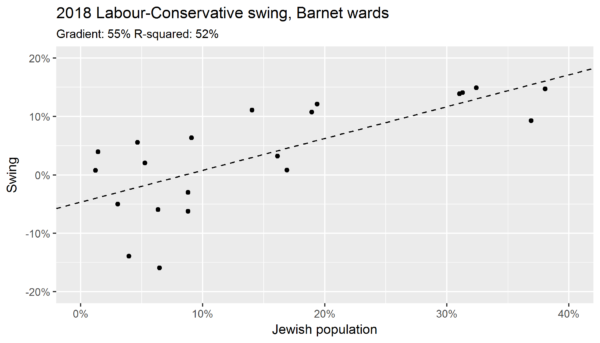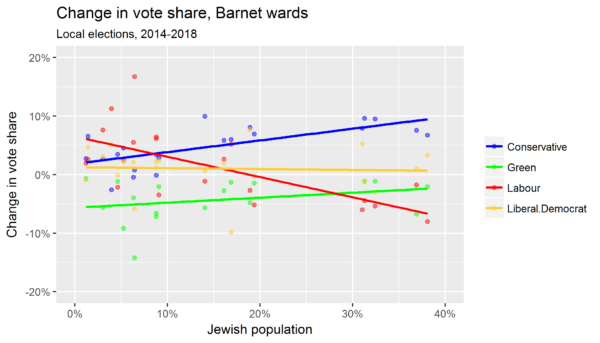My analysis of the local election vote in Barnet has now been quite widely discussed, including on pages one and six of last week’s Jewish Chronicle. But while the chart I created does tell the story of the election, it’s a little difficult to read because it tries to show the whole story, with rises and falls in vote share for all four main parties. This leaves the reader to work out that there’s really just one central narrative of shifts between the two largest of those four parties, while nothing really happens with the remainder.
For that reason, I’ve now produced a simpler chart which shows only the Labour to Tory swing:
Continue reading “The Labour-Conservative swing in Barnet, 2014-2018”

